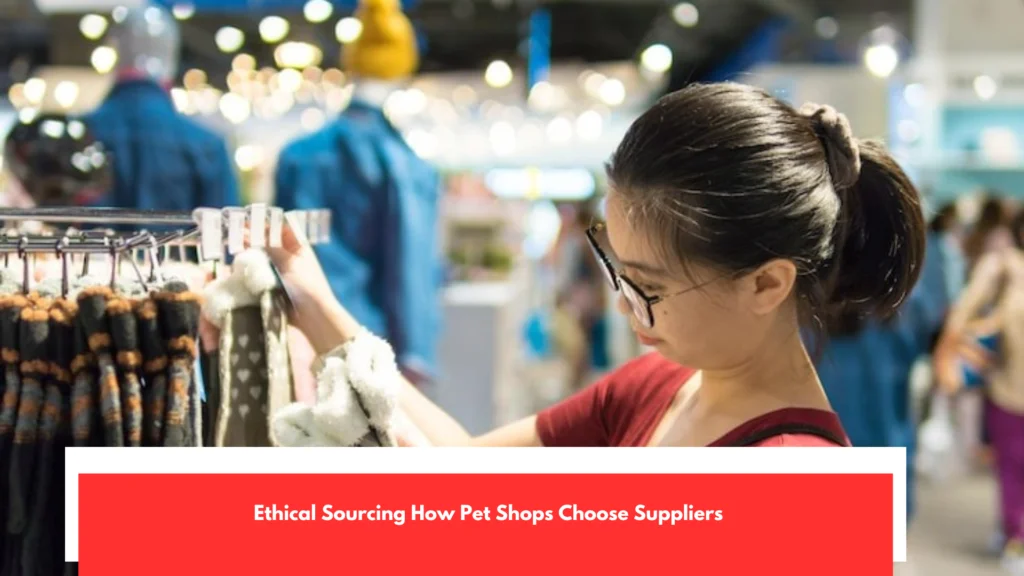Ethical Sourcing How Pet Shops Choose Suppliers. In order to learn about Ethical Pet Food Sourcing, we need to define it first. In its most basic definition, it is the intentional attempt to obtain the ingredients to feed pets in a way that is not harmful to animals, as well as does minimal harm to the environment, and contributes to fair labor practices. Such a description transcends cost-effectiveness to address the more encompassing meaning of ingredient sources and manufacturing processes.
The production of pet food are far-reaching. This explanation starts with the identification of the fundamental elements of ethical sourcing. These elements can also generally classified into three important domains Animal Welfare This term has used to define the human treatment of the animals involved in the pet food supply chain, most of which are livestock and fish. This covers both considerations of living conditions, transportation and slaughter.
Why Ethical Sourcing Matters

An example of this is the tangible move towards ethical sourcing obtaining meat produced by farms with better animal welfare practices e.g., pasture-raised or free-range. Environmental Sustainability This point aims at reducing the environmental impact of the production of pet food. This is interpreted very widely and includes all the things that can be done to curb the emission of greenhouse gases related to agriculture and avoid the deforestation related to the supply of ingredients. All these areas are sustainable fishing, responsible land management and reduction of waste.
Fair Labor Practices Fair labor practices also include the human aspect of the supply chain. In this specification, it is a requirement that there must be a fair payment, safety in the working conditions, and there should be no child labor in the manufacture of the pet food ingredients. This consideration (which may take into account the direct suppliers) sometimes requires considering the labor practices up and down the supply chain, i.e., the farms up to the processing plants.
Stakeholder Engagement and Collaboration

These three pillars are a simple guide to understanding the importation of ethical pet food sourcing. It is not merely a choice between natural or organic ingredients (they can also be ingredients). In its place, it needs a holistic and thoughtful way of choosing ingredients and purchasing. The first move towards ethical sourcing is to gain an understanding of these guiding principles and how they are applied in the pet food industry.
Ethical sourcing of pet food is not an empty fad but an indication of increasing enlightenment in society. Consumers are becoming more aware of the effects of their purchasing choices not only on their personal well-being, but also on the planet and the people that live there. This has extended to their pets and most pet owners are seeking out a food that supports their own ethical standards. What is being explained here is that there is increased demand of ethical pet food due to the increased awareness and concern amongst the consumers. Ethical sourcing is gaining acceptance in pet food as both the meaning.
The Future of Ethical Pet Food Sourcing A Critical Prognosis

Of the term and a market niche are changing towards expectations. However, by taking a more active approach to ethical sourcing, companies not only react to the demands of the consumers, but also create resilience and brand recognition in the long term. By disregarding these aspects, one may suffer reputational losses, supply chain risks, and eventually the inability to address the emerging demands of the market. The implication is obvious ethical sourcing is turning out as a business requirement, rather than as a marketing benefit. Expanding on the basics, to develop a middle ground on Ethical Pet.
Food Sourcing, it is necessary to elaborate on the details in the supply chain. No longer is it enough to merely declare a commitment to ethics, but actions and transparency that can be seen. The ethical content of ethical sourcing on this level entails the active control and checking of the ethical qualification of suppliers and ingredients. The mid-range statement requires one to go beyond general principles to concrete practices. Key areas of focus include Supply Chain Transparency and Traceability The most important thing is knowing how the ingredients got there.
Ensuring Ethical Integrity Through Traceability

This description involves the development of systems to trace ingredients to origin to end product. Traceability enables a company to certify sustainability and animal welfare claims, as well as to easily trace and respond to any ethical challenges that might occur within the supply chain. As an example, technologies such as blockchain are being actively applied to improve supply chain visibility in the food industry. Certification and Standards -Third-party certifications offer external confirmation of ethical claims. There are many different certifications with their own focus and requirements.
It is important to learn about the meaning of various certifications including organic farming, sustainable seafood, or fair trade. The selection of certified ingredients and any other efforts to obtain appropriate certifications in pet food products are evidence of an external validity of an ethical standard. This labeling gives it weight and leaves consumers with a chance to make a conscientious decision, according to established standards. Risk assessment and mitigation Ethical sourcing is not free of problems. A proactive aspect of intermediate level practice is the identification and reduction of possible risks in the supplychain.
